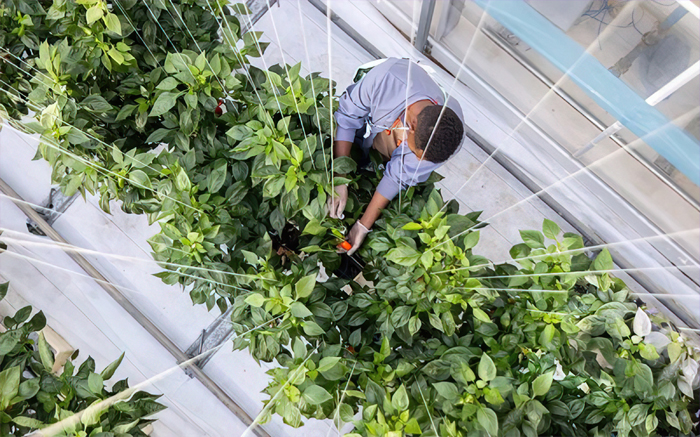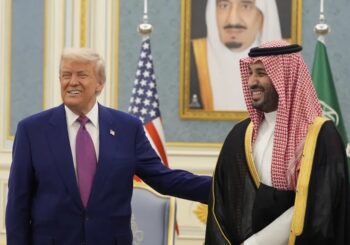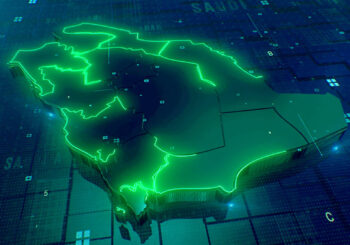For generations, the story of food in Saudi Arabia has been a story of imports. The Kingdom’s geography, a vast expanse of sun-scorched desert, rich in oil but poor in freshwater, made large-scale agriculture a near impossibility, resulting in it importing up to 80 percent of its food.
The sun, a source of life elsewhere, was a relentless adversary, scorching the life from the soil. Food security was synonymous with port logistics and foreign supply chains, a vulnerability exposed by every global disruption.
Vision 2030 aims to tear up that old story. But this isn’t just a Saudi challenge; it’s a global one. As climate change accelerates, vast swathes of the planet are becoming more arid. The world is increasingly looking like Saudi Arabia. This context makes the Kingdom’s response not just a national project, but a potential blueprint for an increasingly thirsty world.
A resource endless in supply is the key?
While many look to the sky-high ambitions of vertical farms in new cities, a quieter, more radical revolution is happening on the coast. It’s a revolution built on a simple, counter-intuitive idea: what if you could grow food not in spite of the Kingdom’s harsh environment, but because of it?
What if you could harness the one resource Saudi Arabia has in endless supply? Saltwater.
This isn’t a distant dream. At King Abdullah University of Science and Technology (KAUST), a world-leading research university, a spin-off company named Red Sea Farms was systematically breaking the laws of traditional agriculture. They were not just growing crops in the desert; they were growing them using the saline water of the Red Sea. It was a feat of deep technology that redefined food production for arid climates globally.
The KAUST Nexus: Where Science Meets the Market
This revolution was born in the lab, not a boardroom. Red Sea Farms was a direct spin-out from the university’s research, founded by Professor Mark Tester and Dr. Ryan Lefers. They saw the twin challenge: traditional greenhouses were non-starters, and desalination was an environmental and economic black hole.
A conventional greenhouse in Saudi Arabia is a “bake-in” oven. The standard solution, evaporative cooling with freshwater, is unsustainable, burning through a resource the Kingdom simply doesn’t have. The alternative, desalination, is a brute-force solution, consuming massive amounts of energy and producing toxic brine that damages marine ecosystems.
The team at KAUST pivoted away from this. Instead of fighting the environment, they decided to design a system that embraced it. Their solution was a masterclass in elegant, integrated engineering, tackling the desert’s two greatest farming challenges: water and heat.
Deconstructing the Desert: The Technology
The Red Sea Farms system was a two-part innovation.
First, it uses saltwater as a ‘climate buffer’. Instead of fighting the heat, the system uses the sea. It pumps saltwater directly from the Red Sea (or a saline well) into a patented greenhouse cooling system. The salt-laden water flows over a honeycomb-like pad at one end of the structure. At the other end, fans pull the hot, dry desert air through this saltwater-soaked pad.
The water evaporates, creating a cool, humid breeze that chills the entire greenhouse to an optimal growing temperature, even when it’s 50°C outside. The salt, which would clog any normal system, is simply washed back out.
This patented technology saves 80 to 90 percent of the freshwater and energy a conventional cooling system would burn. It effectively turns the Red Sea into a giant, free air conditioner.
Second is engineering the plant, not the water. The second piece of the puzzle was even more brilliant. Instead of desalinating water for the plants, the KAUST team developed plants for the saltwater.
Through advanced, non-GMO hybridization and grafting techniques, they developed new rootstocks, the hardy base of the plant, that can thrive on brackish, saline water. Think of it like giving a high-performance engine (a flavourful tomato variety) a rugged, all-terrain chassis (the salt-tolerant rootstock).
While most plants would be poisoned by this level of salinity, these are engineered to tolerate it. The result? Cherry tomatoes, cucumbers, and peppers that are irrigated with high-SA-linity water, drastically reducing the farm’s freshwater footprint to a tiny fraction of a conventional farm.
The ‘Blue Harvest’: A Sweeter, Smarter Crop
The most surprising outcome was not just the existence of these “saltwater tomatoes.” It was their quality.
Producers found that the crops grown in this slightly stressed, saline environment are often superior. The tomatoes are measurably “sweeter” and have “naturally more vitamin C” than freshwater equivalents, according to the company. The salt in the water forces the plant to concentrate its natural sugars, resulting in a more flavourful, nutrient-dense fruit.
This technology quickly moved from the lab to the real world. Red Sea Farms had a 2,000-square-meter saltwater greenhouse on the KAUST campus and expanded its commercial operations. Its produce also made its way to Saudi supermarkets like Tamimi Markets, moving this futuristic concept into the domestic supply chain.
For the Saudi consumer, this meantaccess to fresh, local, and sustainable produce that hasn’t spent two weeks depreciating in a refrigerated shipping container.
A New Export: Climate-Tech as Soft Power
This innovation was not happening in a vacuum. It was a key component in a wider, state-driven AgriTech race.
The Kingdom’s Public Investment Fund, through its subsidiary SALIC, is now investing globally in food production. In late 2023, the giga-project NEOM launched Topian, its own food company, tasked with pioneering climate-proof agriculture and regenerative aquaculture. Topian, too, counts KAUST as a strategic partner.
But the most telling chapter in the Red Sea Farms story, one that reveals the true nature of the Kingdom’s ambition, came in late 2023. In a move that signaled a profound strategic pivot, the company, which had rebranded as RedSea, sold its six-hectare farm operations near Riyadh.
The buyer was Pure Harvest Smart Farms, a major UAE-based competitor. A joint press release from December 2023 framed the move not as a retreat, but as an evolution. RedSea announced it was transitioning from being a farmer to becoming a “pure-play AgriClimate technology company.”
It would no longer just grow produce. It would sell its core intellectual property, its “AgriClimate technology solutions,” to other farms. The first customer for its “iyris SecondSky” heat-blocking roof technology was its buyer, Pure Harvest, which would deploy the tech across the very farms it had just acquired.
This is the final, most crucial part of the paradox. Red Sea Farm’s success was not in becoming the Kingdom’s biggest farmer. Its success was in graduating from the lab, proving a concept at commercial scale, and maturing into a technology vendor that could help all farms, including its rivals, conquer the impossible climate.
Saudi Arabia, in its quest for food security, did not just incubate a farm. It created an exportable solution to one of the world’s most pressing climate challenges.








Comments (0)